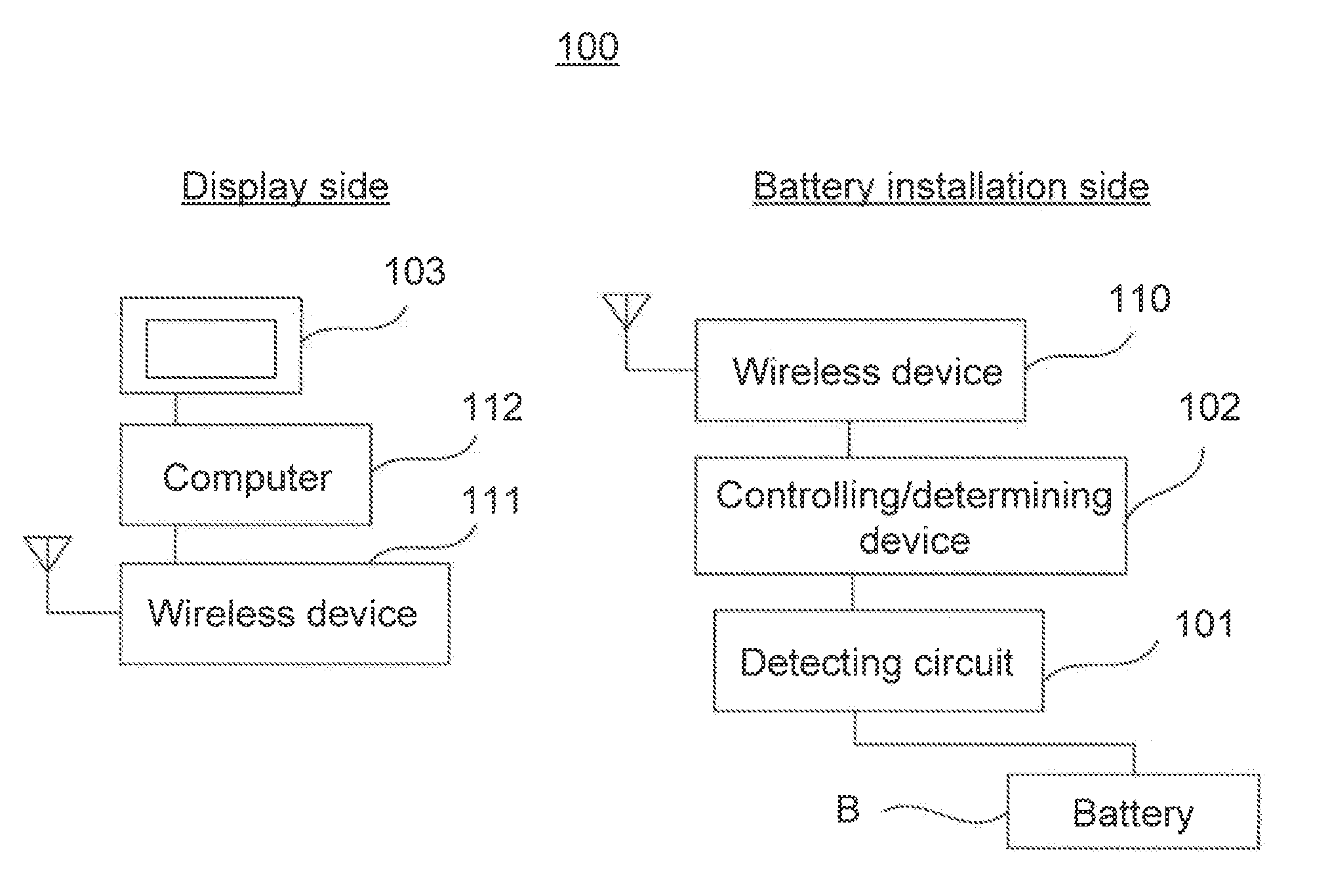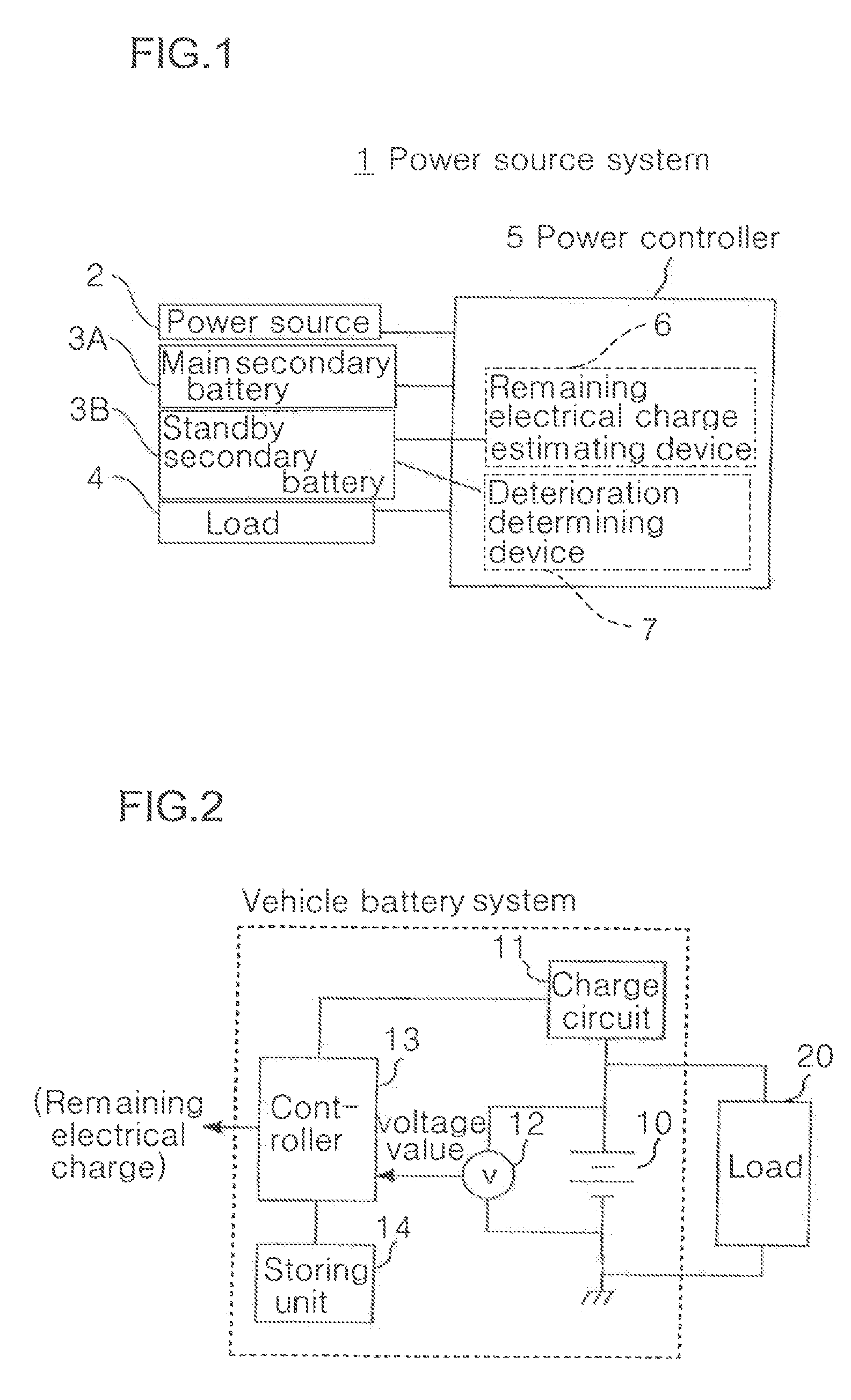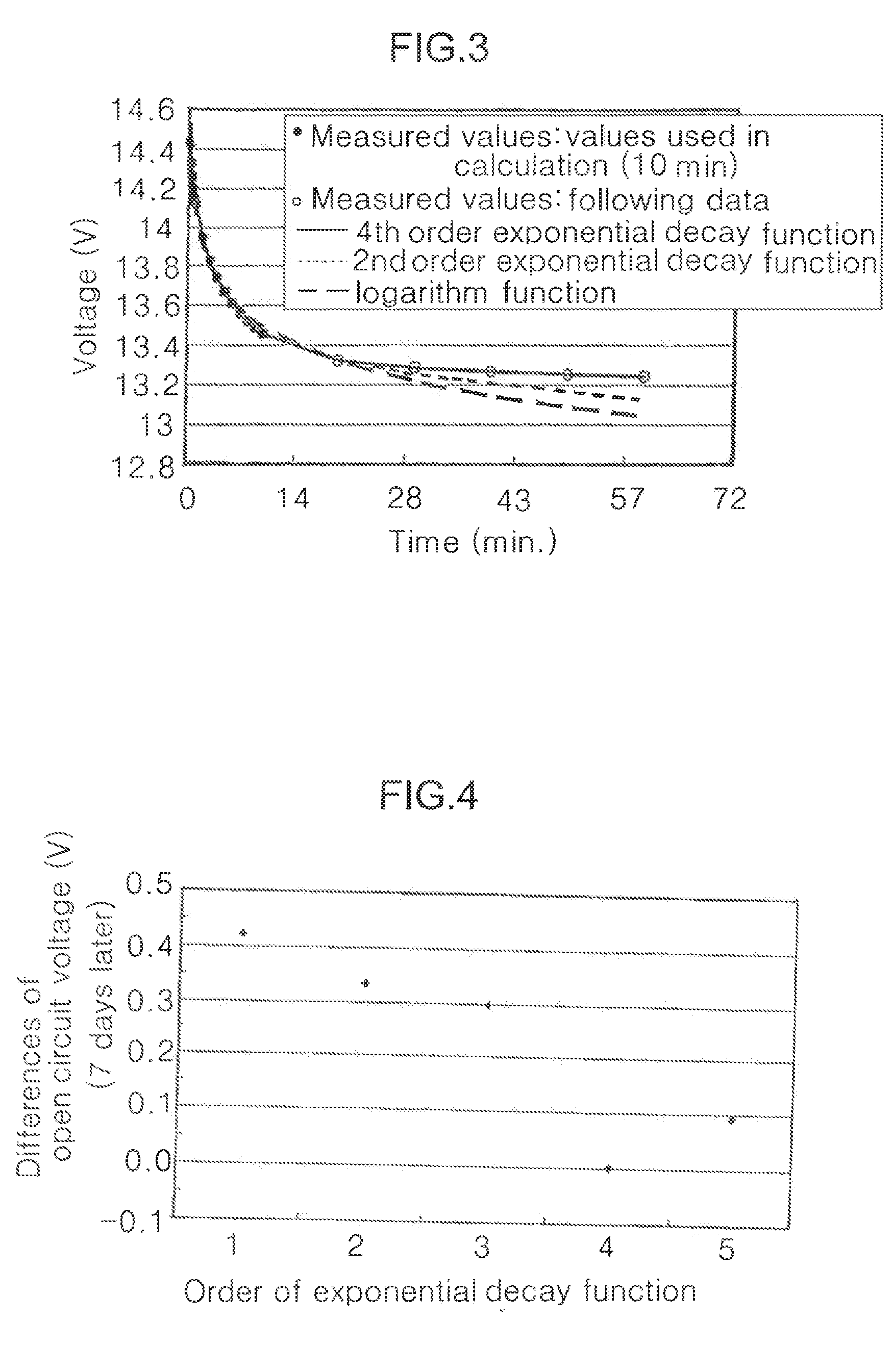Remaining electrical charge/remaining capacity estimating method, battery state sensor and battery power source system
a technology of remaining electrical charge/remaining capacity and estimating method, which is applied in the direction of resistance/reactance/impedence, instruments, and variable measurement arrangements, etc., can solve the problem of difficult to approximate the open circuit voltage of the secondary battery with time characteristic with high accuracy, and the convergence value of the open circuit voltage might show a large error, etc. problem, to achieve the effect of short time and high calculation accuracy
- Summary
- Abstract
- Description
- Claims
- Application Information
AI Technical Summary
Benefits of technology
Problems solved by technology
Method used
Image
Examples
first embodiment
[0067]A feature of the present invention is, when estimating a stable open circuit voltage by fitting with the equation (5), first obtaining at least one of relaxation time coefficients in the equation (5), that is, coefficients A5, A6, A7, A8, antilog of inferior logarithm as the temperature function f1(t), f2(t), f3(t), f4(t) and then performing fitting calculation with a relaxation time coefficient at each temperature being a fixed value.
[0068]In this embodiment, it is assumed that the coefficients A5, A6, A7 and A8 are expressed by temperature functions. Then, the exponential decay function is expressed by the equation (6) and t in the function f1(t), f2(t), f3(t), f4(t) denotes temperature.
F(T)=A1exp{f,(t)T}+A2exp{f2(t)T}+A3exp{f3(t)T}+A4exp{f4(t)T}+A9 (6)
[0069]If f1(t), f2(t), f3(t) and f4(t) in the equation (6) are obtained in advance by experiment and a temperature at a certain point is obtained, f1(t), f2(t), f3(t) and f4(t) can be treated as fixed values. The exponential ...
second embodiment
[0080]the present invention has its second feature in, when estimating a stable open circuit voltage by fitting with the function expressed by the equation (5), first calculating a correlation between relaxation time coefficients in the equation (5), that is, antilogs of inferior logarithm and then, performing fitting calculation, for example, with at least one of the coefficients A6, A7 and A8 used as functions g1(A5), g2(A5) and g3(A5) of the coefficient A5.
[0081]In this embodiment, all of the A6, A7 and A8 are expressed by the functions with the coefficient A5, that is, g1(A5), g2(A5), g3(A5), and for easy explanation, it is assumed that the relations A6=αA5, A7=βA5, A8=γA5 are satisfied for example. In this case, the exponential decay function is given by the equation (12) where α, β, γ are constants obtained in advance by experiment or the like.
F(T)=A1exp(A5T)+A2exp(αA5T)+A3exp(βA5T)+A4exp(γA5T)+A6 (12)
[0082]Next, the above-described exponential decay function F(T) is adopted ...
third embodiment
[0088]Next description is made about the present invention. As described above, in the vehicle battery system of the embodiments, the open circuit voltage is obtained by approximation with 4th order or more exponential decay function for keeping high accuracy in iterating calculations. However, even if the 4th order or more exponential decay function is set, a lower order exponential decay function can be used to perform iterating calculation depending on conditions of the vehicle battery system. The description below is made about, as a modification of the embodiment, a specific calculation method of using substantially-lower-order exponential decay function to realize reduction in calculation load.
[0089]In the third embodiment, utilizing different influence between terms of the exponential decay function depending on the timings to obtain the plural sample voltages (hereinafter referred to as “voltage measurement timing”) a given time along the time axis after charge and discharge...
PUM
 Login to View More
Login to View More Abstract
Description
Claims
Application Information
 Login to View More
Login to View More - R&D
- Intellectual Property
- Life Sciences
- Materials
- Tech Scout
- Unparalleled Data Quality
- Higher Quality Content
- 60% Fewer Hallucinations
Browse by: Latest US Patents, China's latest patents, Technical Efficacy Thesaurus, Application Domain, Technology Topic, Popular Technical Reports.
© 2025 PatSnap. All rights reserved.Legal|Privacy policy|Modern Slavery Act Transparency Statement|Sitemap|About US| Contact US: help@patsnap.com



